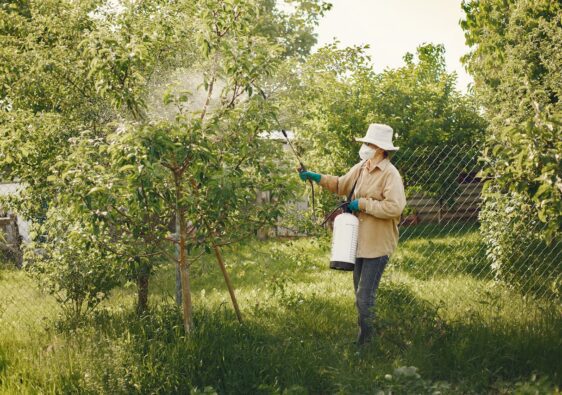Water, the elixir of life, can also be a destructive force when it infiltrates our homes and properties. Water damage can lead to costly repairs, health hazards, and emotional stress. In this blog post, we will explore the common causes of water damage and offer practical tips on how to prevent and prepare for such unfortunate events.
Common Causes of Water Damage
1. Leaky Roofs and Gutters
One of the most common reasons for needing water damage restoration is a leaky roof. Roofs are our first line of defense against the elements, and when they develop leaks, rainwater can seep into your home. Clogged gutters can exacerbate the problem by preventing proper drainage, causing water to accumulate on the roof and find its way indoors.
Prevention: Regularly inspect your roof for missing or damaged shingles and fix them promptly. Clean your gutters at least twice a year to ensure water flows freely.
2. Plumbing Issues
Faulty plumbing can lead to water damage that ranges from minor leaks to catastrophic pipe bursts. Old or corroded pipes, loose connections, and plumbing system malfunctions are all potential culprits.
Prevention: Schedule routine plumbing inspections and address any issues immediately. Consider upgrading old plumbing systems to prevent future leaks.
3. Appliance Failures
Household appliances, such as washing machines, dishwashers, and water heaters, can be sources of water damage when their components fail. Leaking hoses or faulty seals can lead to water spilling onto your floors and damaging adjacent areas.
Prevention: Inspect appliance hoses regularly for signs of wear and tear, and replace them if necessary. Additionally, follow the manufacturer’s maintenance guidelines for all appliances to minimize the risk of failure.
4. Foundation Cracks
Cracks in your home’s foundation can allow groundwater to enter your basement or crawl space, leading to water damage over time. These cracks can result from settling, seismic activity, or poor construction.
Prevention: Regularly inspect your foundation for cracks, and seal them promptly. If you notice significant structural issues, consult a professional for a thorough evaluation.
5. Poorly Sealed Windows and Doors
Inadequate sealing around windows and doors can allow rainwater to seep indoors during storms. This can result in water damage to walls, ceilings, and floors.
Prevention: Apply weatherstripping or caulking to seal gaps around windows and doors. This not only prevents water intrusion but also improves energy efficiency.
Water Damage Prevention Tips
Now that we’ve identified the common causes of water damage, let’s delve into practical steps you can take to prevent these issues and safeguard your home.
1. Regular Maintenance
– Schedule annual inspections of your roof, plumbing, and foundation.
– Replace damaged or worn-out roofing materials promptly.
– Inspect and clean gutters and downspouts twice a year to ensure proper drainage.
– Check for plumbing leaks and address them immediately.
– Install water leak detection devices to alert you to leaks in real time.
2. Proper Insulation
– Insulate your pipes to prevent freezing during cold weather, which can lead to burst pipes.
– Ensure that your attic and walls are properly insulated to regulate indoor temperature and reduce the risk of condensation.
3. Appliance Care
– Routinely inspect and maintain household appliances, including water heaters, washing machines, and dishwashers.
– Replace aging appliances to reduce the risk of sudden failures.
4. Seal Cracks and Openings
– Apply weatherstripping and caulking around windows and doors to prevent water intrusion.
– Seal foundation cracks promptly to prevent groundwater seepage.
5. Landscaping and Grading
– Ensure that your yard is properly graded away from your home’s foundation to divert rainwater.
– Install French drains or a sump pump system in basements or crawl spaces to manage excess moisture.
6. Sewage System Maintenance
– Install backflow preventers to minimize the risk of sewage backup.
– Regularly inspect and maintain your sewer lines.
Emergency Preparedness
Despite your best efforts, water damage may still occur due to unexpected events. Being prepared can make a significant difference in minimizing damage and ensuring your family’s safety.
1. Create an Emergency Kit
– Assemble an emergency kit with essential supplies, including non-perishable food, water, flashlights, batteries, and first aid items.
2. Develop an Evacuation Plan
– Establish a clear evacuation plan for your family with designated meeting points.
– Ensure everyone knows how to turn off utilities such as gas, electricity, and water.
3. Invest in Flood Insurance
– Consider purchasing flood insurance if you live in a flood-prone area. Standard homeowners’ insurance typically doesn’t cover flood damage.
4. Elevate Valuables
– Store important documents and valuables in waterproof containers and elevate them above potential flood levels.
5. Install a Sump Pump
– If you have a basement prone to flooding, install a sump pump to remove excess water.
Responding to Water Damage
Despite your best prevention efforts, accidents can happen. If you discover water damage in your home, follow these steps to minimize the damage:
1. Safety First: Ensure your safety and the safety of your family. Turn off electricity to the affected area if it’s safe to do so.
2. Stop the Water Source: If the water damage is due to a plumbing issue, turn off the water supply at the source to prevent further flooding.
3. Document the Damage: Take photos and videos of the water damage for insurance purposes. Document the affected areas and any damaged belongings.
4. Remove Water: Use a wet/dry vacuum, buckets, or towels to remove as much standing water as possible.
5. Call Professionals: Contact a water damage restoration company to assess the damage and begin the cleanup process. They have the expertise and equipment to handle water removal and drying.
6. Contact Your Insurance: Notify your homeowner’s insurance provider about the incident and provide them with the documentation you’ve collected.
7. Prevent Mold Growth: Mold can develop within 24-48 hours after water damage. Ensure thorough drying and dehumidification to prevent mold growth.
Conclusion
By staying informed and taking action, you can enjoy a dry and worry-free home for years to come.



